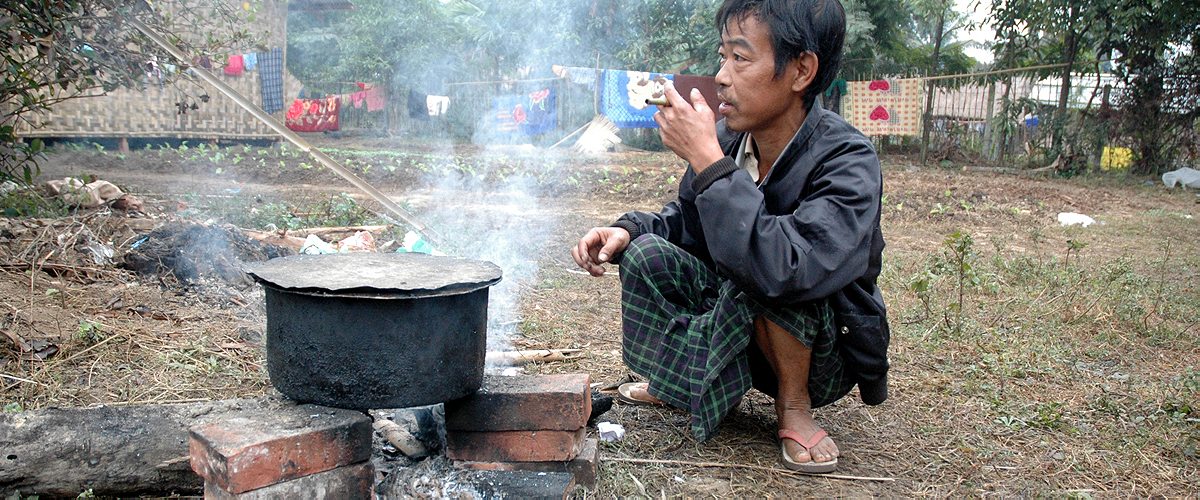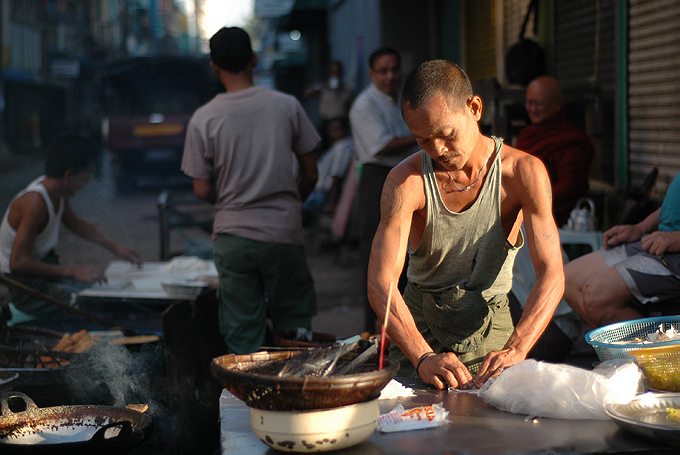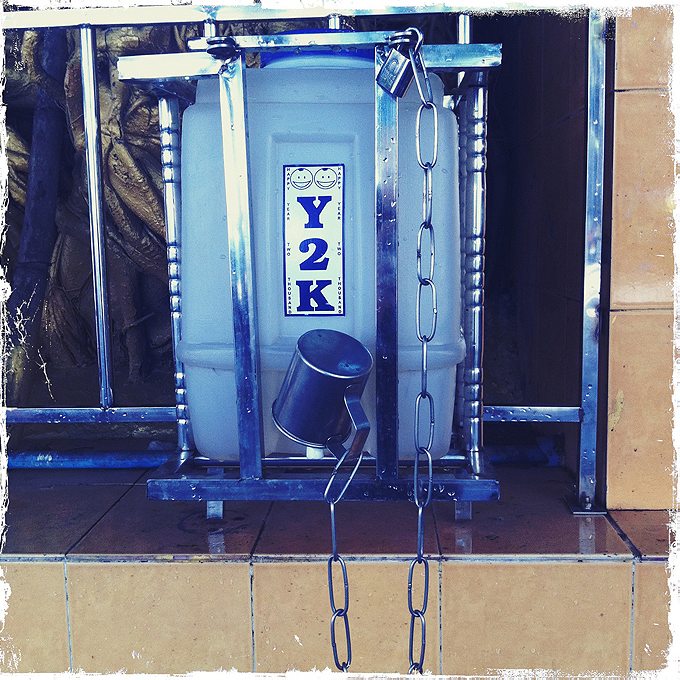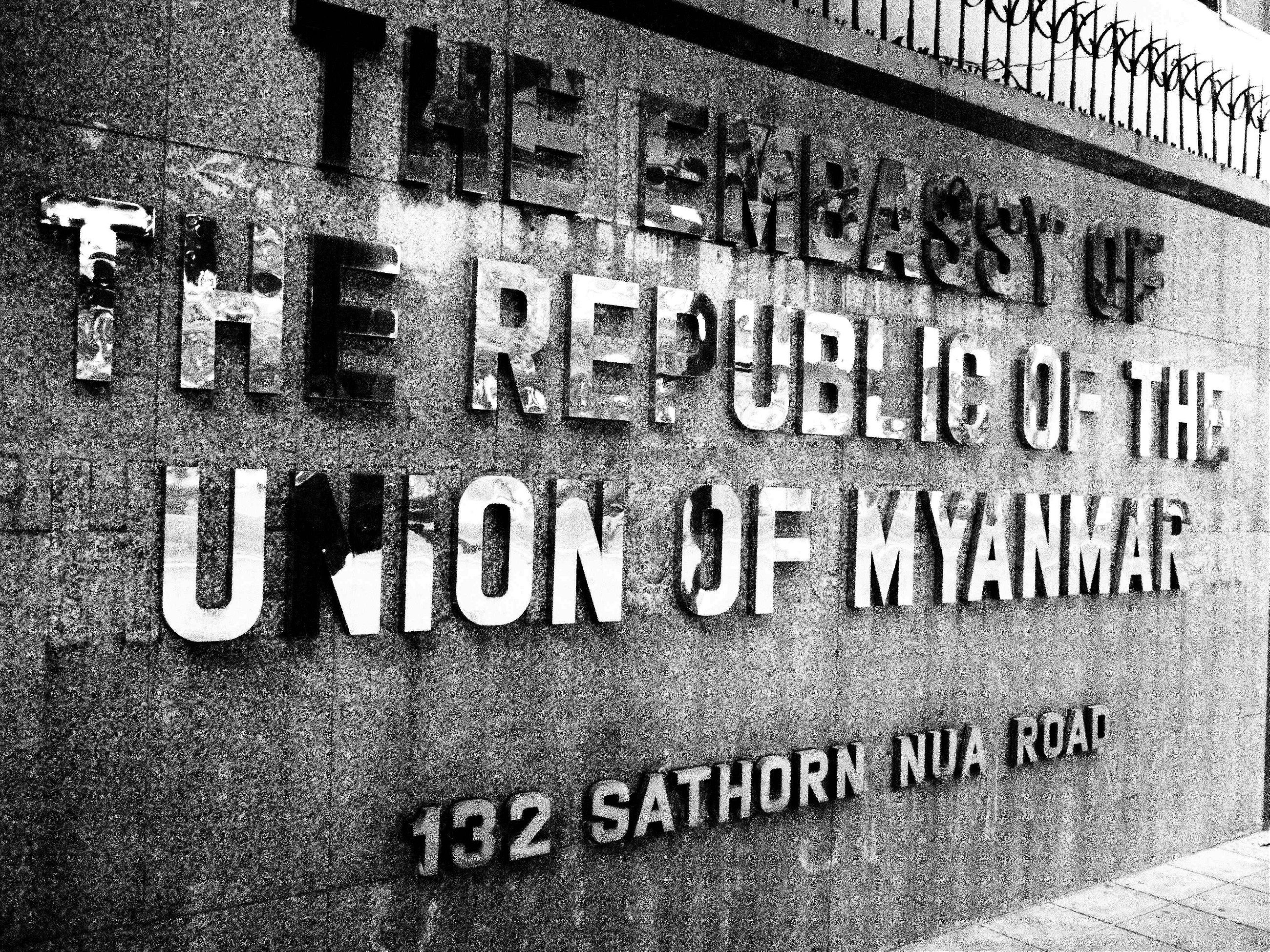Without this guide, you’ll be confused, broke and hobbled with food poisoning within hours of your arrival. Read up.

There are ATMs, and unlike in the past, they’re now taking foreign cards. So you should be fine, especially in the larger cities. But for nostalgia’s sake you can still creep around Scott Market in Rangoon and exchange American dollars (the larger the bill, the better the exchange rate) with the moneychangers. Make sure the bills are crisp; if they can’t break skin, they ain’t worth shit in Myanmar. Seriously: nearly every foreigner there is carrying around at least some worthless $20s and $100s they can’t use or exchange anywhere because of a single nick or crease.

Keep an eye on the internet. When we first visited in 2003, the word barely even existed then. In 2011, it was still folly to expect to send photos or upload videos (or launch a website) from Myanmar. But by 2013, most hotels had wifi, and plenty of it. The world is flooding, in bits and bytes, into Myanmar, and you’ll be able to track some of their infrastructure gains by the speed of your connection.


Yes, those men are wearing skirts. They’re called longyi and they’re actually pretty damn cool. You might even have the urge to rock one by trip’s end, but do your best to resist. A non-Burmese man in a skirt just looks like a tool.

No, those women are not preparing for war. That makeup on their faces is called thanaka, and besides being an effective natural sun block (made from ground bark), it’s also a bit of a style statement. Pay attention to the different shapes—circles, stripes, swirls—women paint on their cheeks throughout the day.


Skip the free hotel breakfast. That was the piece of advice offered by legendary cookbook author and Myanmar trailblazer Naomi Duguid the first morning in our hotel and for it we owe her dearly. Even the dodgiest hotels will offer breakfast, and although it might be free sustenance, it’s a terrible waste of what may be Myanmar’s best meal of the day. Pull up a plastic stool at a teashop and order samosas, a plate of mohinga noodles, and a coffee with a twist of lime. It’ll set you back less than $2.

That smooching sound is not some dude making a pass at your girl. The international signs for flagging down a waiter—finger waves, chin nods, etc—carry little currency in this country. Instead, two short kisses are used to get someone’s attention. The trick is to make the sound via a thin stream of air passing through your lips, rather than from the lips themselves—a trick I never quite mastered, so my spirited attempts at authenticity invariably ended in me sounding like a pervert.


Those red stains you see everywhere—on street corners and in the cracks of sidewalks and stained to the grills of nearly every man the country over? They’re not blood, they’re betel juice. Betel nut is chewed throughout Southeast Asia, but in Myanmar it’s an indispensable part of the daily diet. Hard squares of betel nut are wrapped in betel leaves slicked with lye and laced with an Indian curry’s worth of spices—cardamom, fennel seed, star anise, rose powder, maybe even a touch of tobacco. For a mere 50 kyat (about six cents), you get a chance to fill the streets with your own personal burgundy stream, just like a local. With the texture of a two-by-four, it makes for a chew, but by the time the nut’s mildly narcotic juices start flowing and your head starts spinning, you won’t mind in the slightest.


Rise with the sun. The best hours of the day in Myanmar are from six to eight in the morning, when the light is soft, the heat gentle, and the naan bubbling hot from the tandoor ovens invariably firing in front of the city teashops.


“Where you from?” is the Myanmar’s unofficial way of greeting a foreigner. You could be racing down a country road on the back of a moped and rather than a wave or a simple “hello”, a group of kids will shout “where you from?” as you go screaming by.

Skip the crab. Unless you see them pluck it directly from the Andaman Sea, it’s probably not worth the risk. There’s not enough chili paste in China to overpower the debilitating powers of a rancid crab (just ask Nathan). Refrigeration is spotty, so seafood is best consumed in the earlier hours of the day.


Hip-hop is king. Want to make friends? Study up on the scene. We found ourselves in numerous heated discussions about the three generations of Burmese rappers and the various alliances and beefs between them. Or better yet, bring some burned discs with the latest Odd Future or Quannum Projects mix tape to offer as a gift from the West.

Rehearse your China talking points. All of the locals we spoke with—old women, young monks, chatty cabbies—were eager to talk about China’s stranglehold on their country. Among the many accusations I heard leveled against the neighbors to the north: “heroin pushers,” “jade thieves,” and “silent colonialists.”

English Premier League is serious business in Myanmar. Part of this, of course, is the lingering residue of British imperialism, but the more prosaic explanation for the EPL passion lies in the fact that most English soccer matches on the weekend take place midday (i.e. just after dinner time in Myanmar), meaning that by the time Wayne Rooney sets up for that bicycle blast, the Burmese spectators are on their third Dagon forty.


The only thing as fickle as the Internet in Myanmar is the power grid. Matters have apparently improved markedly in recent years; not long ago, power was only available for part of the day (in some rural parts of the country, scheduled blackouts may still be the rule). Still, don’t be surprised if you’re left groping in the dark.

The oil is there for a reason. I’ve heard lots of people complain about Burmese food being oily, but this isn’t the result of a nation of heavy-handed cooks; it’s a basic protective measure. With little reliable refrigeration, curries are cooked early and often kept throughout the day. The layer of oil shields against bacteria and spoilage, so be thankful it’s there.

Myanmar runs on its own time. Literally. It’s one of the few countries in the world to operate in a offset time zone. Myanmar is eleven and a half hours ahead of EST—a half-hour behind the majority of Southeast Asia.


It’s never been easier to go. We managed to secure visas in just under five hours in Bangkok with nothing more than a few passport photos, an application, and about $40 cash. Still, if you’re a journalist, better you dream up a new profession when filling out the section on job history. We went as caterers from New York, complete with our own business cards. (Slogan: Tri-Tip for the Tri State.) In Myanmar, you can never be too sure.